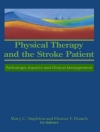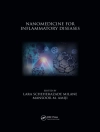In 2010, an estimated 50 million people were uninsured in the United States. A portion of the uninsured reflects unemployment rates; however, this rate is primarily a reflection of the fact that when most health plans meet an individual’s needs, most times, those health plans are not affordable. Research shows that people without health insurance are more likely to experience financial burdens associated with the utilization of health care services. But even among the insured, underinsurance has emerged as a barrier to care.The Patient Protection and Affordable Care Act (ACA) has made the most comprehensive changes to the provision of health insurance since the development of Medicare and Medicaid by requiring all Americans to have health insurance by 2016. An estimated 30 million individuals who would otherwise be uninsured are expected to obtain insurance through the private health insurance market or state expansion of Medicaid programs. The success of the ACA depends on the design of the essential health benefits (EHB) package and its affordability.Essential Health Benefits recommends a process for defining, monitoring, and updating the EHB package. The book is of value to Assistant Secretary for Planning and Evaluation (ASPE) and other U.S. Department of Health and Human Services agencies, state insurance agencies, Congress, state governors, health care providers, and consumer advocates.
Board on Health Care Services & Committee on Defining and Revising an Essential Health Benefits Package for Qualified Health Plans
Essential Health Benefits [PDF ebook]
Balancing Coverage and Cost
Essential Health Benefits [PDF ebook]
Balancing Coverage and Cost
Mua cuốn sách điện tử này và nhận thêm 1 cuốn MIỄN PHÍ!
Ngôn ngữ Anh ● định dạng PDF ● Trang 256 ● ISBN 9780309219150 ● Biên tập viên Cheryl Ulmer & Elizabeth McGlynn ● Nhà xuất bản National Academies Press ● Được phát hành 2012 ● Có thể tải xuống 3 lần ● Tiền tệ EUR ● TÔI 7143698 ● Sao chép bảo vệ Adobe DRM
Yêu cầu trình đọc ebook có khả năng DRM












